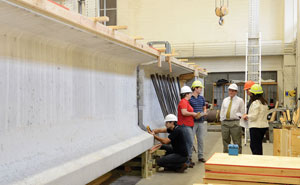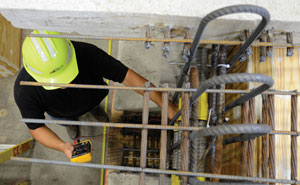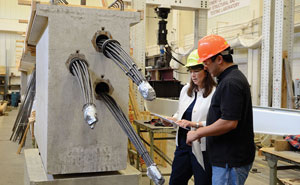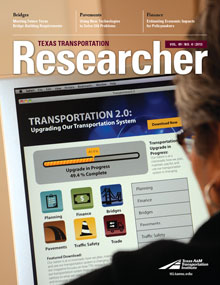Longer Concrete Girders Could Stretch Construction Dollars Further

Splicing concrete girders is a type of construction used on a limited basis in the United States. TxDOT builds bridges with its own concrete girder specifications. As part of TxDOT Project 0-6651, Continuous Pre-stressed Concrete Girder Bridges, TTI Research Engineers John Mander and Mary Beth Hueste (also head of TTI‘s Construction, Geotechnical and Structures Division) are investigating techniques to lengthen concrete girders by splicing them together, eventually helping to create some of the first-of-their-kind bridges for Texas roadways.
The maximum length of a concrete girder in Texas varies between 140 and 160 feet. Concrete girders can be fabricated longer, but transportation limitations dictate that a highway load cannot exceed 160 feet. Hueste says the research project is important because, “TxDOT has its own special girder sections. The department wants to investigate specifically how splicing will work for its bridges and to gain more confidence that the splicing system is a reliable approach to build bridges that perform well over the long term.”

To date, steel and segmental bridges have been the choices for longer bridge spans. Steel is still the most common choice where there is a curved section. The precast concrete industry in Texas creates reliable, economical bridge components. If splicing allows bridges with longer spans to be designed using less-expensive construction techniques and materials, future highway construction dollars can stretch further. “TxDOT believes this will be another economical solution for longer-span bridges. It’s a design option TxDOT likes to have in its toolbox when choosing bridge types,” Hueste notes.
A 71-foot concrete girder was cast for this research project at the Bexar Concrete Works plant in San Antonio, Texas, and transported to the High Bay Structural and Materials Testing Laboratory at Texas A&M University. This special girder has four different segments, allowing researchers to test three spliced connections. “We will test each of the three connections under different combinations of loading to look at the range of forces that occur in a bridge,” Hueste says.

Extensive testing will ensure that the spliced connections meet TxDOT‘s design requirements. “We design for service loads, but we also design for the extreme event. TxDOT wants to look at performance in both ranges. It gives TxDOT confidence in a bridge system where spans can reach 240 feet or longer,” Hueste says.
Hueste summed up the value of this research by saying, “This is going to be another bridge solution that facilitates quicker on-site construction. TxDOT will be able to construct longer-span bridges in a relatively short time with less disruption to the traveling public while providing the safe, durable infrastructure that everyone expects.”
